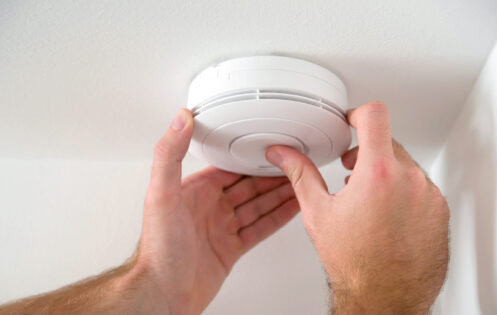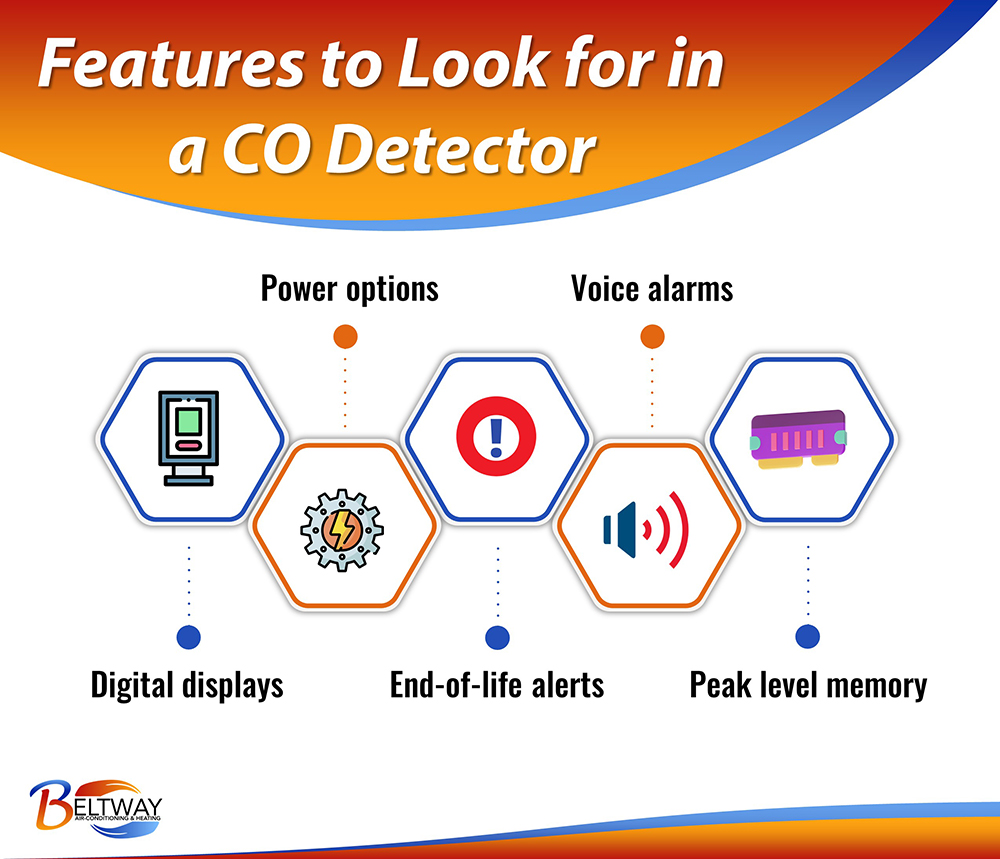
Carbon monoxide (CO) is an insidious gas. Due to its odorless, colorless, and tasteless nature, it has been rightfully dubbed the “silent killer.” Both residential and commercial premises are susceptible to CO emissions. Therefore, both understanding it and investing in reliable CO detectors are crucial for the safety and well-being of occupants.
Why Is Carbon Monoxide Dangerous?
CO is a byproduct of incomplete combustion of fossil fuels. This means anything from your gas stove or heater to your fireplace can be a potential source if not properly ventilated. It’s the kind of danger that doesn’t offer a warning in advance.
When inhaled, CO impedes the blood’s ability to carry oxygen, limiting the supply to crucial organs like the brain and heart. Symptoms of CO poisoning are often mistaken for the flu: dizziness, headaches, nausea, and fatigue. However, high concentrations or prolonged exposure can lead to unconsciousness or even death.
CO detectors are essentially our guardians against potential poisoning. These devices use sensors to measure the concentration of CO in the environment and sound an alarm when dangerous levels are detected. CO detectors are not to be confused with smoke detectors, though combination units exist. The technology behind these alarms has evolved considerably, leading to the emergence of various types of CO detectors. Each comes with its benefits and challenges, making some devices better suited for certain environments or specific applications.
Types of Carbon Monoxide Detectors
Biomimetic Sensors
Biomimetic detectors utilize a unique technology that closely mimics the body’s response to carbon monoxide exposure. These devices contain a gel that, upon absorbing CO, changes its color. This color alteration activates the alarm.
Metal Oxide Semiconductors
Metal oxide semiconductor (MOS) detectors operate by leveraging a semiconductor’s properties at a constant temperature. When CO interacts with the oxide sensor, it affects the resistance of the semiconductor material. As the level of carbon monoxide increases, the resistance decreases, prompting the alarm. These detectors are robust and versatile. Notably, they are often used in industrial settings because of their durability and resistance to other environmental factors. However, a significant downside is their higher energy consumption, which often necessitates them being plugged into an outlet. Although they may come with a battery backup for emergencies, they aren’t as energy-efficient as other options.

Electrochemical Sensors
Electrochemical sensors are currently the most widely used CO detectors in household settings, primarily due to their reliability and efficiency. These devices use electrodes immersed in a chemical solution. When carbon monoxide seeps into the device, it reacts with the chemicals to produce an electric current. Once this current reaches a specific threshold, it triggers the alarm. These sensors are praised for their accuracy and quick response times. They are energy-efficient and often have longer life spans than their counterparts. The electrochemical process is highly specific to carbon monoxide, ensuring fewer false alarms from other gases. On the downside, they can be a bit pricier, but the investment often pays off in terms of reliability and longevity.
Features to Look for in a CO Detector
When investing in a carbon monoxide detector, it’s not just about picking the first or cheapest option you come across. Like all life-saving equipment, certain key features can determine the efficacy and reliability of the device. Take a look at these features and why they’re essential.
Digital Displays
Modern CO detectors often come equipped with digital screens that display the real-time concentration of carbon monoxide in parts per million (ppm). This feature is especially useful because not all CO concentrations, even if they’re above normal, will immediately trigger an alarm. Low levels of CO exposure over a long time can be harmful, particularly for vulnerable populations such as children or those with specific health conditions. A digital display allows occupants to monitor these levels and make informed decisions, like improving ventilation, even before the alarm sounds.
Power Options
CO detectors come with various power options, each catering to different needs. Battery-operated models are portable and can be placed anywhere. They’re especially useful in places without consistent electricity or during power outages. However, they require regular battery checks and replacements. Plug-in models might limit placement options but usually come with a battery backup to ensure the detector remains functional even during power interruptions. Hardwired models, directly connected to a home’s electrical system, offer reliability but might require professional installation.
End-of-Life Alerts
Over time, the sensors in CO detectors can degrade, reducing their efficiency. Most modern detectors have a feature that signals when the device has reached the end of its operational life span, which is typically between 5 to 7 years. This alert, which could be a chirping sound or flashing light, is distinct from the alarm indicating a CO detection. Being informed about the end of life ensures you replace the detector in time, maintaining continuous protection against CO exposure.
Voice Alarms
While a beeping sound is the traditional alarm for most detectors, voice alarms are becoming more popular. This feature provides audible voice warnings such as “Warning! High levels of carbon monoxide detected!” This clarity can be crucial, especially in households where there might be confusion between smoke and CO alarms.
Peak Level Memory
This feature records the highest concentration of CO detected since the last reset or, in some models, over a specific period (like 24 hours). This can be vital for homeowners who want to monitor CO levels in their homes, especially if they’ve been away. If you return from a trip and check your detector to find a high peak level memory, it indicates there was a significant CO concentration at some point during your absence, warranting an inspection of potential sources.
Proper Placement and Installation of Carbon Monoxide Detectors
The effectiveness of a carbon monoxide detector is heavily reliant on its placement. Installing it in the right location ensures timely detection of rising CO levels, while poor placement might delay or entirely miss an alert, potentially putting lives at risk.
For residential spaces, we recommended installing at least one CO detector on each floor, including the basement. This ensures that even if a leak starts on a different level, it will be promptly detected. Special attention should be given to areas adjacent to or outside sleeping areas. The reasoning behind this is straightforward. During sleep, individuals are less likely to notice or respond to the onset symptoms of CO poisoning, making the detector’s role even more critical.
In commercial settings, the placement becomes a bit more intricate. While sleeping areas, if any, remain a priority, areas near combustion devices like boilers, heaters, or any machinery that uses fossil fuels should also have nearby detectors. It’s also crucial to have detectors in continuously occupied areas, like offices or conference rooms, ensuring the safety of employees or visitors.
Improve Your Indoor Air Quality Today!
At Beltway Air Conditioning & Heating we can help you breathe clean air in your home. We offer comprehensive indoor air quality services, including CO detectors, air purifiers, duct cleaning, humidifiers, and dehumidifiers to ensure you and your family enjoy a safe and healthy living environment. We also provide professional heating and cooling services, ranging from installation and repair to maintenance. We’re proud to serve residents of Hanover, MD and the surrounding areas, so contact us at Beltway Air Conditioning & Heating today to learn more about our services!


